What's the most common career advice that most middle aged successful individuals dispense out to their younger generations today? Find what you love doing and start doing it (even if that involves dropping everything else you are doing).

In 2005, when Steve Jobs took the podium at Stanford to give his commencement speech he offered similar advice to hundreds of young students gathered there to listen to, cling on to and learn from each word Jobs spoke. Jobs concluded his remarkable speech with the ending:
You’ve got to find what you love…. The only way to do great work is to love what you do. If you haven’t found it yet, keep looking, and don’t settle.
The video went viral on YouTube and while the most of us (me included) were clinging on to every word of the speech Jobs gave, following his advice, Cal Newport was actually questioning Steve's advice and the passion hypothesis.
In his book So Good They Can't Ignore You Newport explains the basic idea behind Passion hypothesis and how it's a de facto career advice in today's world. He explains:
The key to occupational happiness is to first figure out what you’re passionate about and then find a job that matches this passion.
This hypothesis is one of modern American society’s most well-worn themes. Those of us lucky enough to have some choice in what we do with our lives are bombarded with this message, starting at an early age. We are told to lionize those with the courage to follow their passion, and pity the conformist drones who cling to the safe path.
If you doubt the ubiquity of this message, spend a few minutes browsing the career-advice shelf the next time you visit a bookstore. Once you look past the technical manuals on résumé writing and job-interview etiquette, it’s hard to find a book that doesn’t promote the passion hypothesis.
These books have titles like Career Match: Connecting Who You Are with What You’ll Love to Do, and Do What You Are: Discover the Perfect Career for You Through the Secrets of Personality Type, and they promise that you’re just a few personality tests away from finding your dream job. Recently, a new, more aggressive strain of the passion hypothesis has been spreading—a strain that despairs that traditional “cubicle jobs,” by their very nature, are bad, and that passion requires that you strike out on your own. This is where you find titles like Escape from Cubicle Nation, which, as one review described it, “teaches the tricks behind finding what makes you purr.”
These books, as well as the thousands of full-time bloggers, professional counselors, and self-proclaimed gurus who orbit these same core issues of workplace happiness, all peddle the same lesson: to be happy, you must follow your passion. As one prominent career counselor told me, “do what you love, and the money will follow” has become the de facto motto of the career-advice field.
What I really like about Cal Newport's writing is is ability to ask questions. When all of us are swayed with the herd mentality of following well meaning advice provided by a legend like Jobs, Newport is asking more fundamental questions like - Did Jobs really become famous by what he is asking us to do, or was there more to his success than finding what he loved doing and not settling? Newport explains:
If you had met a young Steve Jobs in the years leading up to his founding of Apple Computer, you wouldn’t have pegged him as someone who was passionate about starting a technology company. Jobs had attended Reed College, a prestigious liberal arts enclave in Oregon, where he grew his hair long and took to walking barefoot. Unlike other technology visionaries of his era, Jobs wasn’t particularly interested in either business or electronics as a student. He instead studied Western history and dance, and dabbled in Eastern mysticism.
Jobs dropped out of college after his first year, but remained on campus for a while, sleeping on floors and scrounging free meals at the local Hare Krishna temple. His non-conformity made him a campus celebrity—a “freak” in the terminology of the times. As Jeffrey S. Young notes in his exhaustively researched 1988 biography, Steve Jobs: The Journey Is the Reward, Jobs eventually grew tired of being a pauper and, during the early 1970s, returned home to California, where he moved back in with his parents and talked himself into a night-shift job at Atari. (The company had caught his attention with an ad in the San Jose Mercury News that read, “Have fun and make money.”)
During this period, Jobs split his time between Atari and the All-One Farm, a country commune located north of San Francisco. At one point, he left his job at Atari for several months to make a mendicants’ spiritual journey through India, and on returning home he began to train seriously at the nearby Los Altos Zen Center.
Calport's point is a rather compelling one. Steve Jobs didn't start apple with the passion of changing the computer industry for ever or as he was so often known to say - 'make a dent in the universe'. Jobs saw an opportunity and placed a small bet. As Calport explains:
I tell this story because these are hardly the actions of someone passionate about technology and entrepreneurship, yet this was less than a year before Jobs started Apple Computer. In other words, in the months leading up to the start of his visionary company, Steve Jobs was something of a conflicted young man, seeking spiritual enlightenment and dabbling in electronics only when it promised to earn him quick cash.
It was with this mindset that later that same year, Jobs stumbled into his big break. He noticed that the local “wireheads” were excited by the introduction of model-kit computers that enthusiasts could assemble at home. (He wasn’t alone in noticing the potential of this excitement. When an ambitious young Harvard student saw the first kit computer grace the cover of Popular Electronics magazine, he formed a company to develop a version of the BASIC programming language for the new machine, eventually dropping out of school to grow the business. He called the new firm Microsoft.)
Jobs pitched Wozniak the idea of designing one of these kit computer circuit boards so they could sell them to local hobbyists. The initial plan was to make the boards for $25 apiece and sell them for $50. Jobs wanted to sell one hundred, total, which, after removing the costs of printing the boards, and a $1,500 fee for the initial board design, would leave them with a nice $1,000 profit. Neither Wozniak nor Jobs left their regular jobs: This was strictly a low-risk venture meant for their free time.
From this point, however, the story quickly veers into legend. Steve arrived barefoot at the Byte Shop, Paul Terrell’s pioneering Mountain View computer store, and offered Terrell the circuit boards for sale. Terrell didn’t want to sell plain boards, but said he would buy fully assembled computers. He would pay $500 for each, and wanted fifty as soon as they could be delivered. Jobs jumped at the opportunity to make an even larger amount of money and began scrounging together start-up capital. It was in this unexpected windfall that Apple Computer was born. As Young emphasizes, “Their plans were circumspect and small-time. They weren’t dreaming of taking over the world.”
Where Steve Jobs excelled however, was in the sheer amount of determination, hard work (and maybe even) passion that he threw at that bet when he saw just how huge a potential the small bet had. But Steve Jobs didn't start with passion and didn't go around looking for a field of work that would check-off all items on his passion checklist. If he did, he wouldn't have founded Apple computers.
Job's life, at that time, resembled the life of a young conflicted seeker trying out lots of things rather than a man with a passion for one thing and a plan to execute that passion.
In the book Newport also talks about the perils of this passion mindset. Entrepreneurs who listen to the whole "follow your passion" and "be courageous" advice and leave their jobs too early and half prepared only to follow their passions often tell a similar story. The story in most of these cases has a tragic end. The book tells a few of these stories and then offers really solid advice that teaches you to learn from what Steve Jobs and other successful masters of different professions do and not what they say you should do.
There are deep ideas in the book. Ideas of how you can gather career capital in your own craft by thousands of hours of deliberate practice and become so good at it that the rest of the world cannot ignore you. Ideas of how you try out different passions and place lots of small bets. The book also covers some basic laws like:
The law of financial viability, which says you should only pursue a bid for more control if you have evidence that it’s something that people are willing to pay you for.
The book is a must read for anyone who has ever thought of, or is thinking about going on their own, getting more control of his / her work life and anyone who has had that urge to follow-their-passions and muster-more-courage to take the plunge.
The take away? Passion is overrated and dreams that materialize have many more secret ingredients than just having the courage to follow your passion. And in today's world these ingredients are just as important as passion even when no-one seems to be talking about these ingredients.
Go read the book. If you're not a reader, you can see Newport's Video on the topic where he talks about how you should learn from What Steve Jobs did, not what he said. Maybe it's about time you stop listening to de facto career advice every time you are offered a single, one size fits all, recipe for success. Maybe it's time you grabbed a copy of the book. Maybe it's time you started asking your own questions every time a self help guru tells you about the virtues of having the courage to follow your own passion. Maybe it's time to stop worrying so much about passion and focus on becoming so good that the world literally cannot ignore you.
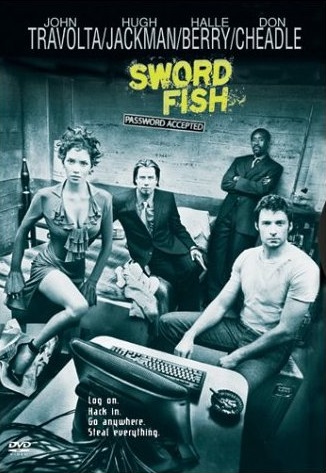
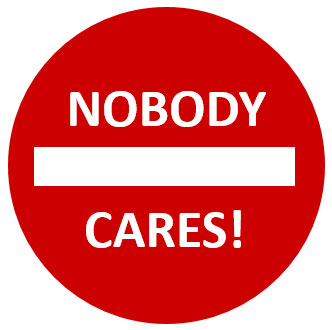


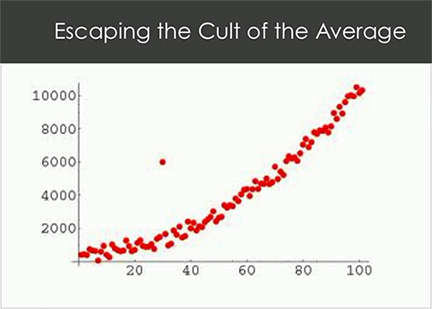
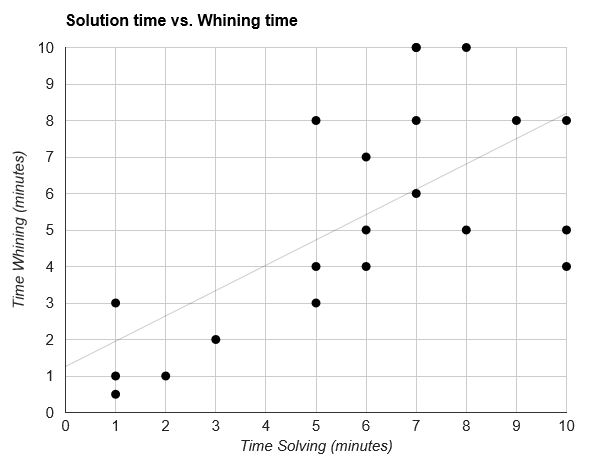
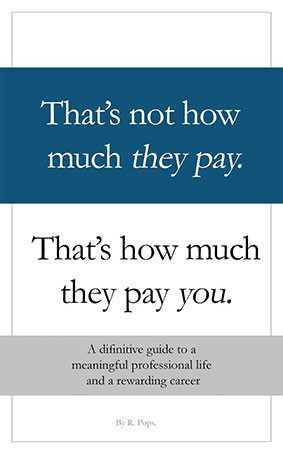
Comments are closed.